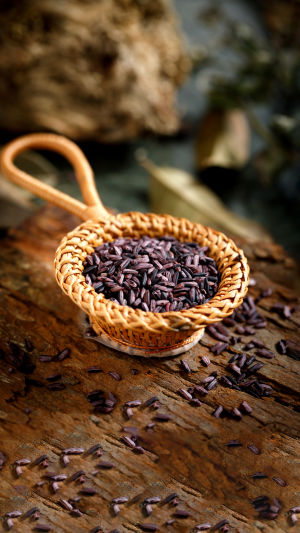Millet, often referred to as corn, stands as one of the oldest cultivated crops globally, with its origins traced back to the Yellow River Valley.
Amidst the vast array of rice varieties, several lesser-known but equally intriguing options deserve recognition.
<h3>Ge Xian Rice: </h3>
This unique rice variety, also known as Tianxian or pearl vegetable, belongs to the Cyanobacteria Candida family. Found in paddy fields, shallow ponds, and wet soil across China, Ge Xian rice offers a high-protein, nutritious, and delectable option for culinary enthusiasts.
While not commonly encountered in everyday life, it presents an opportunity to diversify one's palate and culinary repertoire.
<h3>Green Rice: </h3>
Hailing from the Zhejiang region of China, green rice is not your typical moldy food; it is, in fact, a traditional rice variety with a distinct green hue.
Renowned for its rich selenium content and delightful taste, green rice holds a place of honor in regional cuisines. Whether incorporated into savory dishes or enjoyed as a comforting bowl of porridge, green rice adds both flavor and nutritional value to meals.
<h3>American Wild Rice: </h3>
Nestled in the pristine ecosystems of Canada and the United States, wild rice thrives in environments blessed with fresh air, pure lake water, and abundant natural beauty. Indigenous communities have long revered this nutritious grain as a staple food source.
With its distinctive appearance and robust nutritional profile, wild rice continues to captivate culinary enthusiasts and health-conscious individuals alike. Its unique texture and earthy flavor lend themselves well to a variety of dishes, from hearty soups to flavorful pilafs.
<h3>Golden Rice: </h3>
In contrast to the natural origins of the aforementioned varieties, golden rice represents a genetically modified option. While touted for its high carotenoid and vitamin A content, concerns regarding the safety of genetically modified foods persist.
As such, caution is advised when considering its inclusion in one's diet. Opting for natural, unmodified rice varieties ensures both nutritional integrity and peace of mind.
<h3>Red Rice:</h3>
Familiar with red yeast rice, this variety undergoes fermentation with a deep red mold, resulting in its distinctive color and enhanced nutritional value. Rich in essential minerals and bioactive compounds, red rice boasts a plethora of health benefits, ranging from supporting digestion to promoting cardiovascular health.
Its versatility in the kitchen makes it a versatile ingredient, suitable for everything from savory dishes to sweet treats.
Red rice, with its purplish-red outer skin and nutty flavor, offers a unique culinary experience enriched with health benefits. Beyond its striking appearance, red rice boasts higher levels of essential nutrients compared to traditional white rice.
Packed with zinc, copper, iron, selenium, and other trace minerals, as well as flavonoids, alkaloids, and carotenoids, red rice supports overall well-being.
Whether savored as a comforting bowl of rice porridge, infused into hearty soups, or employed as a colorful garnish to enhance culinary creations, red rice brings not only visual allure but also nutritional richness to every dish, rendering it a versatile and healthful inclusion in any diet.
Irrespective of its variety, rice stands as a ubiquitous presence on dining tables globally, acting as a fundamental foodstuff and versatile ingredient. Opting for naturally cultivated, ecologically sourced rice from trusted providers ensures optimal flavor and nutritional benefits when incorporating it into meals.
Embracing the diversity of rice varieties not only enriches our culinary experiences but also promotes a healthier, more sustainable lifestyle.





